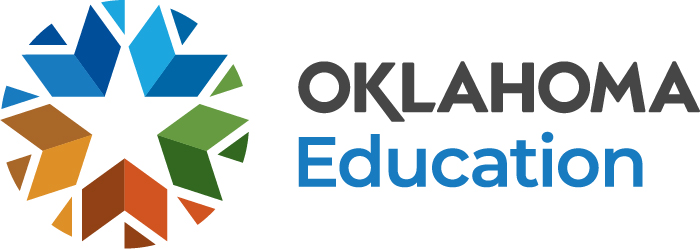Reading Differences Addressing Dyslexia and Beyond
Navigating Dyslexia in Oklahoma
The Oklahoma State Department of Education (OSDE) provides guidance and support for districts in addressing dyslexia, dysgraphia, and dyscalculia within both public and public charter schools. The Oklahoma Dyslexia & Dysgraphia Handbook outlines the essential steps for districts to screen for characteristics of dyslexia and identifies best practices for intervention and support within a Multi-Tiered System of Supports (MTSS). Our mission is to connect each district’s unique needs with the evidence-based practices outlined in the handbook to ensure every student receives the literacy support they need to succeed.
The HEROES Team which includes a dedicated Dyslexia Coordinator, partners with districts and schools to strengthen systems that support students with characteristics of dyslexia. Our work focuses on collaboration, professional learning, and practical guidance to help educators identify, evaluate, and teach students effectively. Through ongoing communication and partnership across OSDE, the HEROES Literacy Instructional Team equips educators with the tools, knowledge, and confidence to meet the diverse literacy needs of all learners. Team members deliver professional development and ongoing coaching cycles regionally, including support for district administrators in designing sustainable systems to Help Elevate Reading Outcomes for Every Student (HEROES).
Defining Dyslexia in Oklahoma
Dyslexia refers to a spectrum of reading skill deficits, which can range from mild delays in learning to read to severe, persistent patterns of reading difficulties that qualify as a specific learning disability. According to the International Dyslexia Association, dyslexia is a specific learning disability of neurobiological origin characterized by difficulties in accurately and fluently recognizing words, poor spelling, and decoding abilities. These challenges typically stem from a deficit in the phonological component of language, which is often unexpected given the individual’s other cognitive abilities and the effectiveness of classroom instruction.
Given this definition, educational systems should actively seek out children demonstrating dyslexia characteristics and implement rapid responses as mandated through the Strong Readers Act and in accordance with the OKMTSS framework. Dyslexia is neurobiological in origin; therefore, a structured literacy approach delivered by a qualified educator who can help develop the neural connections necessary for skilled reading is essential. Dyslexia is not a developmental condition; consequently, strategies such as retention or a wait-and-see approach are not appropriate.
When a student learning with dyslexia qualifies for services under IDEA, the designation for qualification is Specific Learning Disability (SLD). This designation does not include learning problems that are primarily the result of visual, hearing, or motor disabilities; intellectual disabilities; emotional disturbances; environmental, cultural, or economic disadvantages; or limited English proficiency (IDEA, 2004, 34 CFR 300.8).
By undergoing high-dose, intensive remediation to develop accurate and automatic reading skills, students with dyslexia will transition out of Tier 3 instruction and into higher-rigor opportunities. While they may continue to exhibit some characteristics of dyslexia and leverage technology to access high-demand learning environments, students with dyslexia often demonstrate strengths in pattern recognition, spatial reasoning, lateral thinking, and interpersonal communication. Early and swift remediation of phonological awareness deficits, along with attention to accuracy and automaticity in both decoding and encoding, prepares students to not only demonstrate proficiency but also to showcase their giftedness by accessing advanced coursework and preparing for post-graduation opportunities.
To effectively address dyslexia in the classroom, educators should implement multi-tiered support systems and adopt structured literacy best practices through a universal design for learning. This approach is required for the 20% of learners in Oklahoma who struggle with dyslexia but also enhances engagement for the 80% of students who can benefit from more effective teaching methods. Incorporating multi-sensory instruction within a universal design supports all students, including multilingual learners and other neurodiverse populations, such as those learning with ADHD and Autism Spectrum Disorder. Increasing engagement is imperative in our highest-need environments, leading to a decrease in negative behavior referrals.
Micro Learning
Welcome to the world of Micro Learning! Imagine enhancing your literacy skills through quick, bite-sized lessons that last just 3 to 5 minutes. This dynamic approach makes learning not only effective but also engaging, allowing you to absorb complex topics in a way that's easy to understand and remember. Perfect for busy professionals and anyone seeking the flexibility of self-paced learning, Micro Learning is your go-to digital literacy tool.
Dive in and explore – and don’t forget to share this valuable resource with anyone who could benefit from a more engaging learning experience!
Resources
Contact
Kiley Aleman
HEROES Dyslexia Coordinator
(405) 522-6261
Megan Ashbaugh
Program Manager, Literacy
(405) 521-3363


